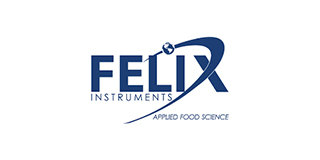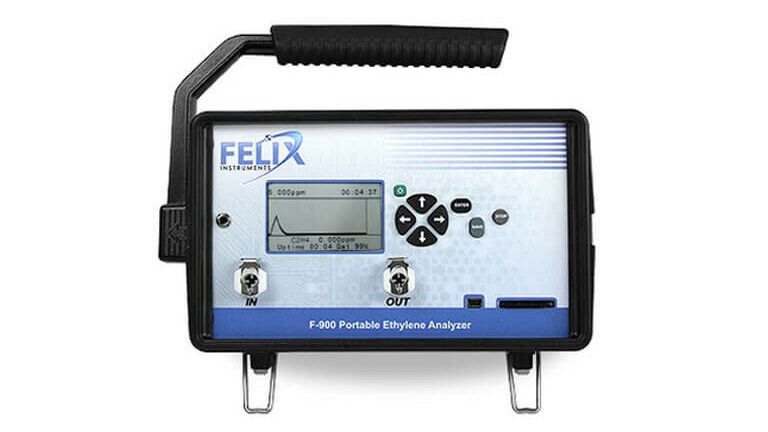

Felix Instruments
Measurements
Maximizing Agricultural Quality and Efficiency: The Comprehensive Guide to Near-Infrared Spectroscopy (NIRS) Applications
In the post-harvest stage, NIRS is used for shelf-life assessment, defects and disease detection, process monitoring, sorting, packaging, retailing, and authentication
 Applications.png)
The good fresh produce qualities at harvest must be maintained during the postharvest stages until consumption. Managers must make decisions for the orchards, packing, storage, and transport to optimize quality, which requires constant monitoring. Near-infrared spectroscopy is the most popular emerging non-destructive technology for pre- and post-harvest applications.
Near Infrared Spectroscopy
Fleshy fruits and vegetables provide fundamental nutrients to people but are highly perishable. Around 20–40% goes to waste between harvest and the consumers. So, production and handling processes focus on reducing losses and maintaining quality.
The conventional methods for assessing quality are destructive, time-consuming, and impractical for automation. In contrast, emerging non-destructive technologies, particularly Near-infrared spectroscopy (NIRS), have found wide commercial applications for quantitative analysis of chemical or physical attributes. They can be used without sample preparation and are suitable for analyzing packaged materials.
The NIRS technology measures light interaction with commodities in the 780–2500 nm spectrum, particularly the short-wave NIR region (750–1100 nm), and is based on the distinct NIR spectra that each material’s bio composition produces.
While fixed and portable systems exist, the recent trend is to develop portable devices, such as Felix Instruments quality meters (F750 and F751s) for pre- and post-harvest applications, aided by chemometrics.
Preharvest NIRS Use
NIRS is mainly used in the preharvest phases for assessing fruit maturity and precision agriculture.
- Maturity Indices: Farmers use maturity indices to decide the harvest time for optimum crop quality. NIRS measures fruit maturity using external features like color or internal parameters like soluble sugar content (SSC), dry matter (DM), firmness, total acidity (TA), or chlorophyll degradation. The parameter used depends on species and fruit types.
- Nutrition and Irrigation Management: Remote and field portable NIRS devices can accurately estimate essential macronutrients, most micronutrients, and water content in leaves and soil fertility to advise fertilizer and irrigation management in fields to improve crop growing conditions and yield and quality.
- Disease and Pest Detection: Diseases cause 50% of yield losses due to biotic factors. Remotely sensed images based on NIR spectroscopy detect diseases, weeds, and pest stress early by estimating changes in internal chemical composition before external damages develop. This allows for timely intervention and averting loss of yield and quality.
Figure 1. Causes of postharvest losses along the supply chain, Palumbo et al. 2022. (Image credits: https://www.mdpi.com/2304-8158/11/23/3925
Post-harvest Applications for Near-Infrared Spectroscopy
Managers make post-harvest decisions for sorting, grading, storage, ripening, and retailing depending on internal quality attributes estimated by NIRS.
- Sorting, Grading, and Packing: NIRS is integrated into packing lines for sorting and grading to meet produce specifications by assessing internal parameters, defects, and fruit spoilage; see Figure 1. Portable devices are used for lot sampling, while inline and online grading use fixed devices.
- Fruit Ripening: NIRS is used to check and monitor ripening during storage, in ripening rooms, transport, and retailing, using parameters like SSC, TA, color, and firmness.
- Safety: NIRS is being used to detect biological and chemical contamination of food. Biological contamination can be fungal-produced aflatoxins or microbial spoilage. Chemical contamination could be nitrating accumulation on crops like spinach, controlled by European regulations that now require nitrogen fertilizer detection on the greens.
- Nutrient Content of Fresh Produce: Several nutraceuticals enriching fruits and vegetables, like vitamins, antioxidants, polyphenols, carotenoids, etc., can be estimated by NIR spectroscopy.
- Storage: NIRS helps determine the suitable storage duration and conditions for various species and varieties based on maturity stages and ripeness.
- Process Control: The choice of fruits and monitoring processing happens with NIRS. For example, choosing fruits with a specific SSC range for juice-making or tracking winemaking by different chemicals as it ferments.
- Authenticity and Classification: NIRS helps authenticate fresh produce to determine the area of origin, ecological chemical-free farming methods, and identify protected varieties.
- Retailing: NIRS tools can estimate ripeness, detect pests and diseases, and detect spoilage and maturity to aid decision-making like sorting, storing, culling, and pricing.
Handheld NIRS tools are helpful in storage, ripening, repacking, distribution, and retail centers.
Early Applications Are Most Useful
Food quality and yield can be enhanced by applying NIRS early in the ‘upstream’ for the best effects, as maturity attributes at harvest decide post-harvest quality, storage life, sorting, grading, handling, and marketing decisions.
Sources
Beghi, R., Buratti, S., Giovenzana, V., Benedetti, S. & Guidetti, R. (2017). Electronic nose and visible-near infrared spectroscopy in fruit and vegetable monitoring. Reviews in Analytical Chemistry, 36(4), 20160016. https://doi.org/10.1515/revac-2016-0016
Cattaneo, T.M.P., & Stellari, A. (2019). Review: NIR Spectroscopy as a Suitable Tool for the Investigation of the Horticultural Field. Agronomy, 9, 503. https://doi.org/10.3390/agronomy9090503
Habib, M. K, & Rizk, H. (2021). Pre-Harvest and Post-Harvest Techniques for Plant Disease Detections. IntechOpen. doi: 10.5772/intechopen.97612
Palumbo, M., Attolico, G., Capozzi, V., et al. (2022). Emerging Postharvest Technologies to Enhance the Shelf-Life of Fruit and Vegetables: An Overview. Foods, 11, 3925. https://doi.org/10.3390/foods11233925
Pérez-Marín, D., Torres, I., Entrenas, J.-A., Vega, M., & Sánchez, M.-T. (2019). Pre-harvest screening on-vine of spinach quality and safety using NIRS technology. Spectrochimica Acta Part A: Molecular and Biomolecular Spectroscopy, 207, 242–250. https://doi.org/10.1016/j.saa.2018.09.035
Prananto, J. A., Minasny, B., & Weaver, T. (2021). Rapid and cost-effective nutrient content analysis of cotton leaves using near-infrared spectroscopy (NIRS). PeerJ, 9, e11042. https://doi.org/10.7717/peerj.11042
Recena, R., Fernández-Cabanás, V. M., & Delgado, A. (2019). Soil fertility assessment by VIS-NIR spectroscopy: Predicting soil functioning rather than availability indices. Geoderma, 337, 368–374. https://doi.org/10.1016/j.geoderma.2018.09.049
Sohaib Ali Shah, S., Zeb, A., Qureshi, W. S., Arslan, M., Ullah Malik, A., Alasmary, W., & Alanazi, E. (2020). Towards fruit maturity estimation using NIR spectroscopy. Infrared Physics & Technology, 111, 103479. https://doi.org/10.1016/j.infrared.2020.103479
Walsh, K. B., McGlone, V. A., & Han, D. H. (2020). The uses of near infra-red spectroscopy in postharvest decision support: A Review. Postharvest Biology and Technology, 163, 111139. https://doi.org/10.1016/j.postharvbio.2020.111139


.jpg)













